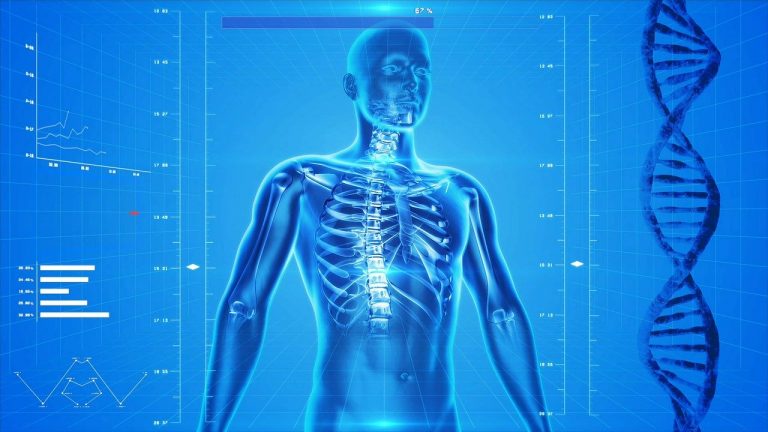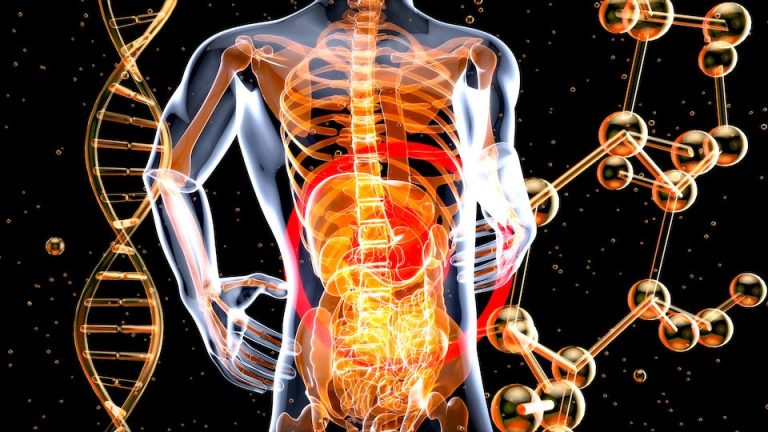38 Curious Facts about the human body that you did not know
The interesting curious facts of the human body that perhaps you did not know. Curious Planet shares the curiosities of the human body that you may never have heard. Are you ready to know interesting and incredible and surprising things about the human body?
The human body never ceases to amaze us. It is a perfect machine that takes us everywhere. For this reason, you will surely enjoy reading these 38 curious facts about the human body as much as I do.
Curious facts about the human body
1. Did you know that a newborn’s heart is about the size of a walnut ? This is one of the curious facts about the human body for children that you can teach them.
2. A single gram of DNA is said to contain as much information as a trillion compact discs.

3. The body is made up of about 73.2 trillion cells, which are like grains of earth that make up a brick, which in turn make up a house. Only our “grains” are alive and work together.
4. At birth, most of our skeleton is made up of a flexible material called cartilage, the same material our ears are made of. It then hardens into bone tissue.
5. Also at birth, our skull has not closed completely. If at that age, a doctor were to open up our head at a certain point, he would directly bump into our brain and not the cranial bone. Over time the skull closes completely.
6. During the first three months we gain a quarter of our original weight in each month. Over time this weight gain decreases. That’s good, otherwise we’d be the weight of a blue whale at four years old.
7. The baby takes its urine inside the womb. 90 percent of the fluid inside the amniotic sac is fetal urine. (Check out the most curious and strange uses of urine )
8. The tongue contains 9,000 sensory receptors. This is the part where receptors abound and is the reason why little ones prefer to use their tongue to explore their surroundings.
9. Just like fingerprints, each human being has unique prints on the tongue. This is due to the exclusive distribution of the taste buds on the tongue.
10. It is believed that people produce between 1 and 2 liters of saliva a day.
11. The saliva found in the mouth contains lysozyme, especially it serves to annihilate microbes.
12. Eyebrows, eyelashes, and ear and nose hairs trap airborne bacteria . Sweat, tears, phlegm and mucus remove them.
13. Fever in our body is a symptom that our body is fighting an illness, because heat makes it difficult for the virus to multiply . But excessive heat can be dangerous and that is why it must be controlled.
14. The food we consume travels 4 kilometers through the digestive system and takes about 12 hours on its way. Therefore, food travels at approximately 0.33 km/h . The gopher tortoise walks at a speed of 0.21 to 0.48 km/h. So now you know how fast food moves through your body.
15. Did you know that the second brain is in the stomach ? It is called the enteric nervous system (ENS).
16. Adrenaline makes you see better. This tells the muscles of the iris to contract, causing the pupils to expand. This way you will see your vision will improve in a pressing situation.
17. The maximum moment of adrenaline we experience at birth , it is even more intense than a heart attack.
18. Our liver performs 500 different functions, some of which are: generate body heat, detoxify the body, purify the blood, produce a digestive fluid called bile, among others.
19. Smart people often suffer from insomnia. If you can’t sleep, maybe it’s because you have increased brain activity, that is, you have so many things on your mind that keep you awake at night. Other experts say this explains why some are more productive at night.
20. Women blink more than men. Women blink about 19 times a minute, while men blink about 11 times a minute. What do you think of these curiosities of the human body?
21. Only after you’ve lost more than half of your hair will people start to notice.
22. Aromas are chemical elements that travel in the air we breathe and are detected by our olfactory nerves. The sense of smell can distinguish more than a billion different aromas.
23. The bones of the middle ear (hammer, incus and stirrup) are so small that they fit on a fingertip and remain that size for the rest of our lives.
24. The cilia are filaments 200 times thinner than a hair and are used to perceive sound. Over time or due to misuse, they wear out and it is a cause of not hearing well.
25. The semicircular canals are part of the inner ear, but have nothing to do with hearing. Its function is to indicate our orientation, position and displacement in space. In this way we maintain balance.
26. Wax protects the ear from fungi and bacteria.
27. Ears never stop growing .
28. Touch receptors send electrical impulses to the brain. These nerve impulses travel at 320 km/h, the same speed that cars run in Formula 1.
29. The hypothalamus, which is located in the brain, controls our body heat. But it is also the one that kicks off adolescence by releasing a protein called quispectin (kisspeptin) throughout the brain.
30. The brain, along with the ears, performs a complex mathematical operation called Fourier analysis. It does this to transform an auditory wave into different frequencies (here you can learn what else your brain does when it perceives sound ).
31. Did you know that the cornea is the only part of the body that does not receive blood, since it obtains oxygen directly from the air?
32. In 2017, scientists discovered a new organ , the mesentery, found in our digestive system. It causes a high production of C-reactive protein, which regulates the metabolism of fats and sugar. It also controls some coagulation processes. It has a high concentration of lymph nodes, which regulate the migration of cancer cells. It is believed that obesity, diabetes and atherosclerosis may be related to the dysfunction of this organ.
33. Until the first twenty years of our life, we have almost quadrupled our original height, our weight has increased twenty times, we have consumed about nine tons of food, and the heart has beat more than 84 million times.

34. It is said that the saliva that a person produces throughout his life (70 years), would be enough to fill a medium-sized swimming pool.
35. A person of approximately 70 years has breathed about 645,436,800 times in his entire existence. Some can go as high as 700 million times, depending on your lifestyle.
36. A person throughout his life will have absorbed between 183 million and 220 million liters of air.
37. Passing the youth our body stops growing, but not to change. Old cells are replaced with new cells and some organs are completely renewed. Almost every two years all cells are replaced, so we release a new body. What do you think?
38. It is false that hair and nails continue to grow after death .
How many of those things did you not know? What do you think about the curious facts of the human body?
Other data…
There are always many things to discover about our human body. Therefore, here I leave you my recommendation of some articles that may be of interest to you. For example, check out eye trivia , ear trivia , or nail trivia everyone should know.
Don’t miss our list of 125 short curious facts that will leave you with your mouth open, or 186 curious facts that you probably didn’t even imagine . And don’t forget to explore the category did you know? .


